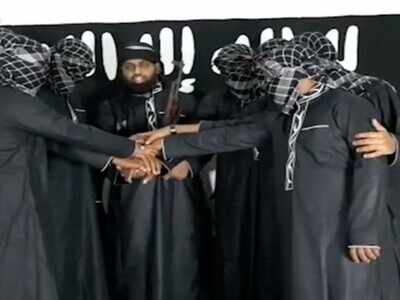
COLOMBO: On Easter Sunday, just hours after a series of bomb explosions tore through Sri Lanka, a video showing a bearded man wearing a topi and spewing venom was circulated widely.
Soon almost the entire world learnt that Zahran Hashim, somewhere in his 40s, could well have masterminded the deadly attack that killed 253 people and injured around 500.
In the video, Zahran, who was heading the fledgling National Thowheed Jamaath, speaks in Tamil with a faint Lankan slant: “The faith classifies men as three types — one is the Muslim, another who is in agreement with the Muslim and the third one who has to be killed. Many people are afraid to say this. When this is pointed out, some call it terrorism. Anyone who is not in agreement with Islam has to be killed.”
Born in Kattankudi, a coastal Muslim town in Batticaloa district 300km from Colombo, Maulvi Zahran Hashim’s growth was rapid as much as it was short-lived. A home-grown radical leader, his fundamentalist leanings went almost unnoticed by the Sri Lankan government. His fiery sermons and open support for the Islamic State outfit on social media drew thousands of supporters, many of them youth. But Lankan authorities paid scant regard to the radical, with tragic consequences, say moderate Muslim leaders.
“We complained about Zahran’s hate speeches to the intelligence agencies as far back as 2015 when we found his videos in circulation on social media,” Muslim Council of Sri Lanka vice-president Hilmy Ahamed told TOI.
Ahamed again raised the issue with Lankan authorities in December 2018 when Zahran vandalised some Buddhist temples in Mawanaalla, about 110 km from Colombo. He was accompanied by youth whom he had radicalised under the pretext of taking Quran classes, said Ahamed.
It was after the series of attacks on Buddhist temples in 2017 that the leader grabbed the attention of the Lankan authorities. Subsequently, he went underground and surfaced on April 21 with his suicide attacks. Videos and photographs of him that surfaced on social media showed him posing with seven masked men, declared as the suicide bombers by the Sri Lankan government.
In Kattankudy, where he grew up, his family members, acquaintances and former NTJ associates disowned him. Thoufeek Moulvi, claiming to be the leader of NTJ, told reporters in Kattankudy. “We had expelled him from the party a while ago after he took on the Sri Lankan government,” said Thoufeek, adding, “Those who kill people, women, children are not Muslims.”
Soon almost the entire world learnt that Zahran Hashim, somewhere in his 40s, could well have masterminded the deadly attack that killed 253 people and injured around 500.
It has now been disclosed, by Sri Lankan President Maithripala Sirisena, that Zahran, who was the ringleader, could well have been one of the eight suicide bombers who set out on their chilling mission.
In the video, Zahran, who was heading the fledgling National Thowheed Jamaath, speaks in Tamil with a faint Lankan slant: “The faith classifies men as three types — one is the Muslim, another who is in agreement with the Muslim and the third one who has to be killed. Many people are afraid to say this. When this is pointed out, some call it terrorism. Anyone who is not in agreement with Islam has to be killed.”
Born in Kattankudi, a coastal Muslim town in Batticaloa district 300km from Colombo, Maulvi Zahran Hashim’s growth was rapid as much as it was short-lived. A home-grown radical leader, his fundamentalist leanings went almost unnoticed by the Sri Lankan government. His fiery sermons and open support for the Islamic State outfit on social media drew thousands of supporters, many of them youth. But Lankan authorities paid scant regard to the radical, with tragic consequences, say moderate Muslim leaders.
“We complained about Zahran’s hate speeches to the intelligence agencies as far back as 2015 when we found his videos in circulation on social media,” Muslim Council of Sri Lanka vice-president Hilmy Ahamed told TOI.
Ahamed again raised the issue with Lankan authorities in December 2018 when Zahran vandalised some Buddhist temples in Mawanaalla, about 110 km from Colombo. He was accompanied by youth whom he had radicalised under the pretext of taking Quran classes, said Ahamed.
It was after the series of attacks on Buddhist temples in 2017 that the leader grabbed the attention of the Lankan authorities. Subsequently, he went underground and surfaced on April 21 with his suicide attacks. Videos and photographs of him that surfaced on social media showed him posing with seven masked men, declared as the suicide bombers by the Sri Lankan government.
In Kattankudy, where he grew up, his family members, acquaintances and former NTJ associates disowned him. Thoufeek Moulvi, claiming to be the leader of NTJ, told reporters in Kattankudy. “We had expelled him from the party a while ago after he took on the Sri Lankan government,” said Thoufeek, adding, “Those who kill people, women, children are not Muslims.”
Download The Times of India News App for Latest World News.
#ElectionsWithTimes
more from times of india news
Elections 2019
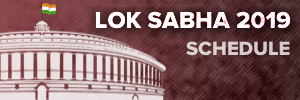
Trending Topics
LATEST VIDEOS
Trending Videos
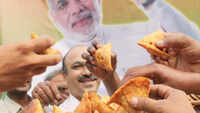 Watch: Brawl over ‘samosas’ during UP Dy CM Maurya’s public rally
Watch: Brawl over ‘samosas’ during UP Dy CM Maurya’s public rally  The blind and impoverished John Milton sold the copyright of Paradise Lost for £10 in 1667
The blind and impoverished John Milton sold the copyright of Paradise Lost for £10 in 1667 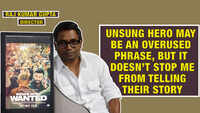 Raj Kumar Gupta: Unsung hero might be an overused phrase, but it should not stop me from telling their story
Raj Kumar Gupta: Unsung hero might be an overused phrase, but it should not stop me from telling their story 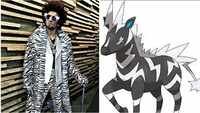 Fan compares Ranveer Singh's picture with Pokemon!
Fan compares Ranveer Singh's picture with Pokemon!
More from TOI
Navbharat Times
Featured Today in Travel
Get the app






